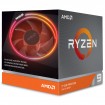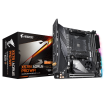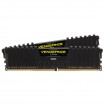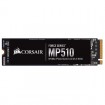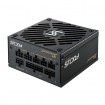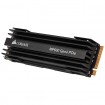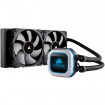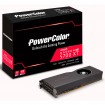Much like everyone else, I'm sure everyone will be upgrading to the Zen 2 architecture and I'm certainly no exception. However, I'm now going even more small form factor than I did with my Jonsbo W2 in 2014 from an Antec P280.
The main purpose of this PC is for production and gaming. I mainly use 3ds Max, Fusion 360, Illustrator, Premiere and Unreal Engine 4 plus lots of 3D printing. As I'm doing more and more complicated models I'm finding that my 3D printer slicers are starting to chug and sometimes not even process, even Fusion 360 is struggling at times. So I've decided to finally upgrade and go Team Red for the first time since the mid-90's.
I currently have the below components selected and with an external NAS, I won't have any storage issues. My only qualm is with the water cooling solution. While an AIO is extremely fast to put together, I would love to water cool both the CPU and the GPU for better temps, something that's very important in an SFF case.
The Rads will most likely be a low profile 240 and 120. If I can fit a 240 at the bottom with the graphics card there then that should make everything considerably better, but, for this setup would a single 240 be fine? There are 2 tube holes at the back of the case which I was thinking of using for bleeding and filling the system.
I have never done a custom loop before so some advice would be grand.
My basket at Overclockers UK:
Speaking about the case, I have already pre-ordered the Ncase M1 v6. The only issue with the case is that with a USB Type-C connector on the front IO, the motherboard will require a 20 pin header yet everywhere I look all ITX and DTX boards have 19 pin headers - does anyone know of a workaround for this?
Another issue I have is regarding my sound setup. Currently, I have optical and the only other input for my speakers is Bluetooth. Knowing that the Gigabyte Auros ITX uses Bluetooth, would this work with the speaker if there's no optical connection?
The main purpose of this PC is for production and gaming. I mainly use 3ds Max, Fusion 360, Illustrator, Premiere and Unreal Engine 4 plus lots of 3D printing. As I'm doing more and more complicated models I'm finding that my 3D printer slicers are starting to chug and sometimes not even process, even Fusion 360 is struggling at times. So I've decided to finally upgrade and go Team Red for the first time since the mid-90's.
I currently have the below components selected and with an external NAS, I won't have any storage issues. My only qualm is with the water cooling solution. While an AIO is extremely fast to put together, I would love to water cool both the CPU and the GPU for better temps, something that's very important in an SFF case.
The Rads will most likely be a low profile 240 and 120. If I can fit a 240 at the bottom with the graphics card there then that should make everything considerably better, but, for this setup would a single 240 be fine? There are 2 tube holes at the back of the case which I was thinking of using for bleeding and filling the system.
I have never done a custom loop before so some advice would be grand.
My basket at Overclockers UK:
- 1 x AMD Ryzen 9 3900X Twelve Core 4.6GHz (Socket AM4) Processor - Retail= £499.99
- 1 x Gigabyte X570 I AORUS PRO WIFI (AMD AM4) DDR4 X570 Chipset iTX Motherboard= £226.99
- 1 x Corsair Vengeance LPX Black 32GB 3200 MHz AMD Ryzen Tuned DDR4 Memory Kit= £188.99
- 1 x Corsair Force MP510 series 960GB NVMe PCIe M.2 Solid State Drive (CSSD-F960GBMP510)= £128.99
- 1 x Seasonic Focus SGX 650W 80 Plus Gold Modular SFX Power Supply= £129.95
- 1 x Corsair Force MP600 series 1TB NVMe PCIe Gen4 M.2 Solid State Drive (CSSD-F1000GBMP600)= £248.99
- 1 x Corsair Hydro Series H100i PRO RGB Performance Liquid Cooler - 240mm (CW-9060033-WW)= £119.99
- 1 x PowerColor Radeon RX 5700 XT 8GB GDDR6 PCI-Express Graphics Card= £379.99
Total: £1,934.98 (includes shipping: £11.10)
Speaking about the case, I have already pre-ordered the Ncase M1 v6. The only issue with the case is that with a USB Type-C connector on the front IO, the motherboard will require a 20 pin header yet everywhere I look all ITX and DTX boards have 19 pin headers - does anyone know of a workaround for this?
Another issue I have is regarding my sound setup. Currently, I have optical and the only other input for my speakers is Bluetooth. Knowing that the Gigabyte Auros ITX uses Bluetooth, would this work with the speaker if there's no optical connection?


